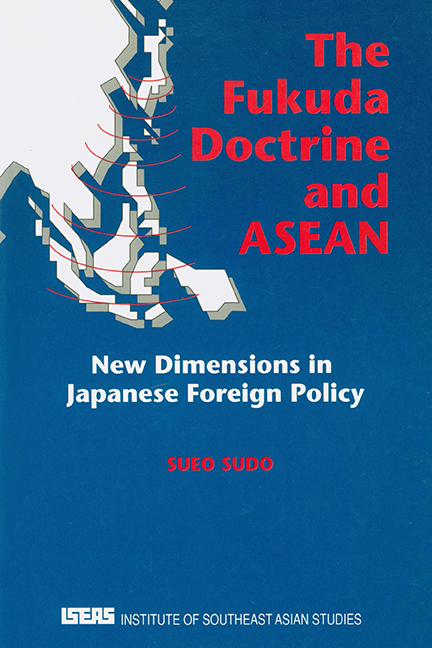Book contents
- Frontmatter
- Dedication
- Contents
- List of Tables
- Preface
- Abbreviations
- Introduction
- chapter one A Framework for Analysing Japanese Policy Towards Southeast Asia
- chapter two Post-war Japan's Re-entry into Southeast Asia
- chapter three Japan's Policy Towards Regional Development
- chapter four External Challenge and Changing Japan-Southeast Asia Relations; 1975–77
- chapter five A Changing Southeast Asia in Japanese Politics
- chapter six Formulating the First Doctrine in Japanese Foreign Policy
- chapter seven Japan's ASEAN Policy, 1977–87
- chapter eight Conclusion
- Appendices
- Bibliography
- Index
- THE AUTHOR
chapter seven - Japan's ASEAN Policy, 1977–87
Published online by Cambridge University Press: 21 October 2015
- Frontmatter
- Dedication
- Contents
- List of Tables
- Preface
- Abbreviations
- Introduction
- chapter one A Framework for Analysing Japanese Policy Towards Southeast Asia
- chapter two Post-war Japan's Re-entry into Southeast Asia
- chapter three Japan's Policy Towards Regional Development
- chapter four External Challenge and Changing Japan-Southeast Asia Relations; 1975–77
- chapter five A Changing Southeast Asia in Japanese Politics
- chapter six Formulating the First Doctrine in Japanese Foreign Policy
- chapter seven Japan's ASEAN Policy, 1977–87
- chapter eight Conclusion
- Appendices
- Bibliography
- Index
- THE AUTHOR
Summary
Since the announcement of the Fukuda Doctrine three major policy issues in the context of Japan's approach towards Asia have come to the fore: (1) the conclusion of the Peace and Friendship Treaty with China; (2) the execution of a Southeast Asian policy directed towards the peaceful coexistence of ASEAN and the Indochinese countries; and (3) the vigorous pursuit of a uniquely Japanese policy towards the North–South problem, focusing on the demands and interests of the ASEAN countries. As the Sino–Vietnam conflict escalated, however, all three issues combined to form an antagonistic polarization of the region – something Japan hoped to avoid at all costs. In 1980, responding to Hanoi's intervention in the Cambodian situation, Japan had to discontinue its political use of economic assistance to Vietnam until a peaceful resolution of the conflict was achieved. This would seem to mean the end of the first of the Doctrine's twin goals. We will examine Tokyo's approach to the third Indochina conflict in order to assess the way in which the positive attitude of the Japanese Government was put to use in pursuing the Fukuda Doctrine.
The unique development of Japan–ASEAN relations will also be studied in this chapter since the Doctrine promised to forge a “special” relationship with the organization. In particular, we will analyse and assess the impact of the Doctrine on Japan–ASEAN economic relations. As we have discussed in the previous chapter, however, Japan's economic co-operation with ASEAN; except for the five regional projects, did not constitute the core of the Doctrine, although the ASEAN countries had expected it. Given this reservation the Japanese attempts to play a political role in Southeast Asia and to establish a “special” relationship with ASEAN will be seen as an indication of the substantive changes that would be wrought by the Doctrine in Japan–Southeast Asia relations.
- Type
- Chapter
- Information
- The Fukuda Doctrine and ASEANNew Dimensions in Japanese Foreign Policy, pp. 186 - 225Publisher: ISEAS–Yusof Ishak InstitutePrint publication year: 1992

